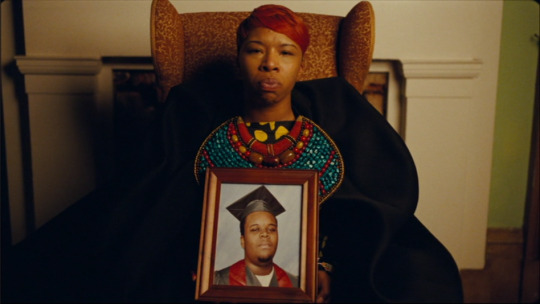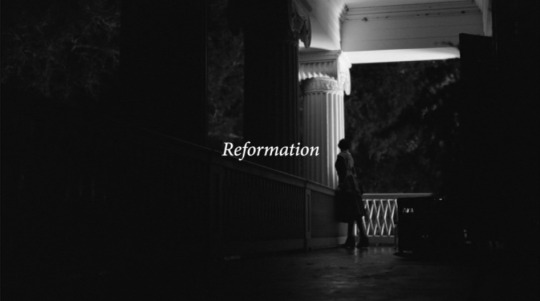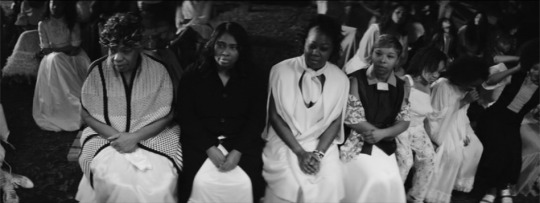#Lesley McSpadden Head
Explore tagged Tumblr posts
Text



Lemonade (2016)
#Lemonade Beyonce#2010s#2016#Film#Trayvon Martin#Michael Brown Jr#Eric Garner#Lesley McSpadden Head#Beyonce#Gwen Carr
97 notes
·
View notes
Text

Michael Brown (May 20, 1996 - August 9, 2014) his name became synonymous with the growing Black Lives Matter movement and a nationwide debate about unarmed Black men being fatally shot by law enforcement. He was born to Lesley McSpadden and Michael Brown Sr. in Florissant, Missouri. He grew up living alternately with his mother, father, and paternal grandmother. He graduated with his class in 2014 and planned to enroll in a trade school.
A convenience store security video captured him pushing a clerk into a display case as he stole a pack of cigars. He and a friend were walking in the middle of the street when they encountered Darren Wilson, a white police officer, who ordered them onto the sidewalk. It is unclear if Wilson was aware of the convenience store robbery. A physical altercation between him and Wilson ensued, resulting in Wilson shooting him at least six times, twice in the head.
Outrage in the community grew swiftly as his body remained face down in the street for four hours after the shooting. Some eyewitness accounts at the scene described him as having his hands up when he was shot. Angry residents peacefully protested in the streets using the phrase “Hands up, don’t shoot.” As the intensity of the unrest increased, Ferguson police were criticized for responding with heavy-handed tactics, including military-style equipment and weapons, which only served to further enrage the community.
On August 11, the FBI opened a civil rights inquiry into his death. Meanwhile, violent protests continued, and after Missouri Governor Jay Nixon’s attempt to impose a curfew failed, he brought in the National Guard on August 18 to help restore order.
His funeral was held on August 25. On November 24, 2014, the grand jury, made up of nine whites and three Blacks, decided not to indict Darren Wilson. The verdict sparked large-scale violent protests and destruction in Ferguson as well as demonstrations in dozens of cities across the US, resulting in several hundred arrests nationwide. #africanhistory365 #africanexcellence #blm
0 notes
Text
"Lemonade held space for women who had lost both people and time—women who found themselves having to bury both feelings and children. “Forward” honors to Lesley McSpadden-Head, Sybrina Fulton, Gwen Carr, the mothers of Michael Brown, Trayvon Martin, and Eric Garner. The women are at once majestic and deeply troubled as they hold pictures of their sons, victims of state violence fueled by racism. Lemonade reminds us of the power of women being in community and healing together. Healing is a journey of continually living and loving ourselves back to life, and we don’t have to do it alone.
- Four Years of Lemonade by Lauren Whiteman forn
And, as the chapter on resurrection ends, a Mardi Gras Indian passes through as if she is cleansing the energy, making room for hope. We need more of that. It’s hope that makes freedom possible."
#beyonce#bey#beyhive#lemonade#anniversary#good music#r&b#jay z#healing#love#spirituality#houston texas#the south#black music#honor#4:44
0 notes
Text
---Remembering Michael Brown
Only a few hours has passed since the blood was shed from an innocent African American youth, that Saturday – Sunday, a weeping town turns their tears into explicit action.
An officer responds to a call at approximately 11:51am, Saturday August 9th, the dispatcher claims that there is a robbery suspect walking toward the Quick Trip, a convenience story in the town of Ferguson Missouri. Officer Darren Wilson approaches the alleged suspect and his friend, 18-year-old Michael Brown – only one of the boys are able to leave with life, whilst the other perishes in a pool of his own blood. This African American teen lost his life in what is argued as cold hearted murder, however the St. Louis County Police Department releases a statement that his killing is a result of Brown reaching for Wilson’s gun. A crime that was eerily committed in the cul-de-sac of a neighborhood community, 12 shots fired and Brown’s body is left for hours in the unforgiving sun before proper examination.
The night air is thick with resentment, Sunday August 10th, in Ferguson – where the whole community of family, friends, passerby, and people who heard the story gather for a candlelight vigil. This predominantly African American town is growing weary of the prejudice they face and another young life lost due to police brutality. Many of the men who knew Brown or simply heard of what ensued, choke back angry tears & fears that what happened in broad daylight could happen to them as well. Anger burns in the hearts of the tired and those of the rebellious, reminiscent of the candles’ orange flames the vigil attendees are clasping parallel to the murky black sky. Within hours, the nerving still of the town progresses into mayhem.
Peaceful demonstrators of Ferguson take the streets in everyday attire, clad with signs scrawled on cardboard and cardstock, pleading “Stop taking our boy’s lives”, “When will it stop?”, and little ones naive to the extent of the situation holding signs reading “Will you take me next?” Mixed in the group are the radicals, bandana tied, shirts around their heads, and black masks only exposing their angry eyes waiting for the slightest upset from the police and whomever may stand in their way.
Around 8:30 pm, Police officers from every jurisdiction in the St. Luis area filed into the scene, remaining stoic and unnerved by the passions of the demonstrators. Behind their bullet proof vests and shields were weapons for necessary protection which most of the crowd did not have – gases, bullets, batons, and dogs. Somewhere tear gas was thrown into the crowd to encourage people to return home, a recipe for immediate action taken part by either peaceful or militant protestors, and so it began, the smell of violence was in the air.
What seemed like a strive for anarchy and violence, was a strategic plan for many to finally seize what they felt deprived of, and show that they were no longer a victim. White owned businesses were looted, including places where their own were denied employment, or faced racial discrimination. These were the aggressors; they did everything but surrender with their hands up.
A glass bottle was hurtled into the police line-up sometime around 10pm, and it was clear that this fight was no longer just in remembrance of one life lost, but the deprivation of many. It was around two hours earlier that the hymns of church goers were heard in conjunction with the sobs of Michael Brown’s parents Lesley McSpadden and Michael Brown Sr – now to be replaced with the sounds of shattering glass, shrill of alarms, voices throttling in homicidal outrage.
0 notes
Text



Lemonade (2016)
#Lemonade Beyonce#2010s#2016#water //#Beyonce#Kahlil Joseph#Sybrina Fulton#Gwen Carr#Wanda Johnson#Lesley McSpadden Head
2 notes
·
View notes